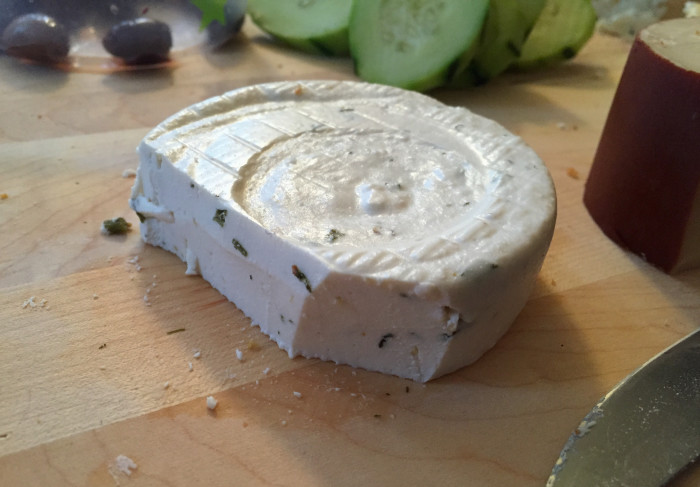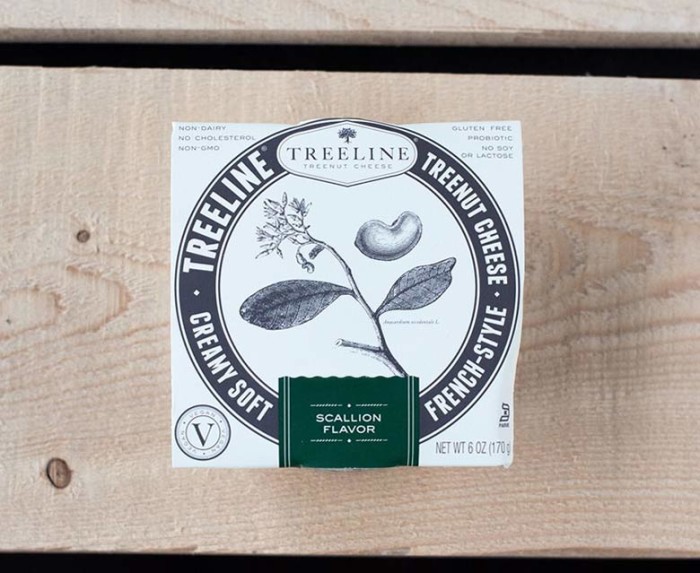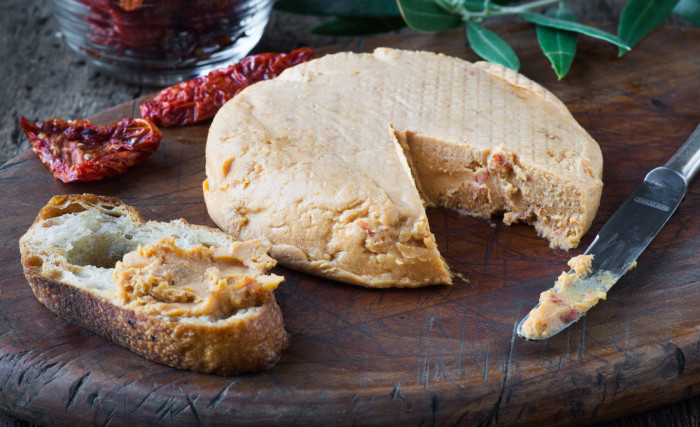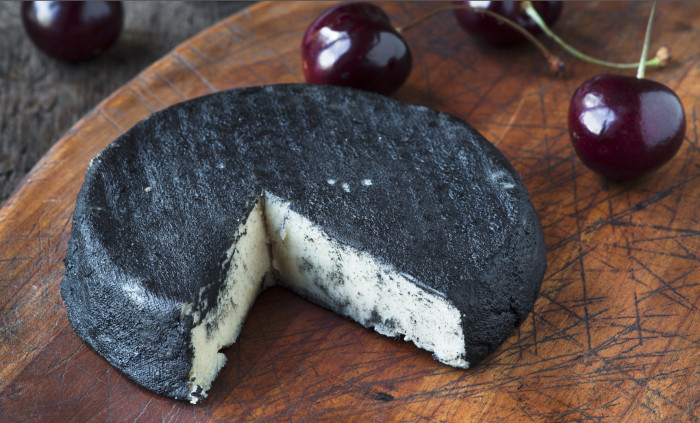How To Pair Vegan Cheese With Wine
Vegan cheese isn't like real cheese for one simple reason: dairy fat. Fat is what gives cheese its luxurious depth of flavor — it's why nonfat milk and low-fat mozzarella can be unsatisfying. Most alternative cheeses rely on nuts, specifically almonds and cashews, or other plant-based sources to replace the fat content of milk and cream. But these fat sources simply are not the same.
Alternative cheeses may be produced in organic kitchens by artisanal cheesemongers, but they don't age in dark and damp cheese caves, developing rich, pungent layers of mold and rind. In fact, probiotics are often intentionally added to the nut milk to mimic the effects of naturally occurring bacteria in aged cheeses. Texturally, they don't have the supple gooeyness of soft-ripened cheeses like Brie or Camembert, nor do they boast the compact, crumbliness of hard cheeses like Manchego.
Texture and complex, nuanced flavor will always be challenges for nondairy alternatives, but this isn't necessarily a bad thing. Their lack of prototypical cheese profiles is, in fact, their greatest asset. Since they aren't made from dairy, vegan cheeses are lighter, lower in cholesterol and make a great canvas for layering flavors. And because they don't have the same flavor profiles and mouthfeel as cheese, the traditional rules of wine pairing can be bent.
Broadly speaking, you don't want to overpower a delicate cheese with a big, full-bodied wine, and you don't want to lose the nuances of a lighter, floral wine to the oiliness of an aged cheese. When in doubt, crisp, acidic wines with clean, bright finishes are the best pairing for any cheese because they cut through the dairy fat and balance the strong, odious flavors of even the most assertive aged cheeses. They're also widely appealing to a range of palates — the reason why Sauvignon Blancs and Pinot Gris/Grigio are common alongside cheese plates.
This is all still true; although these thresholds are much more lenient with flavored vegan cheeses. And everyone knows lenient thresholds are where the fun happens.
A large percentage of high-quality vegan cheeses resemble spreads, or slightly less-creamy versions of goat cheese. Since their texture closely mimics actual dairy, these are your best options for cheese plates. Serve these cheeses alongside crackers and sliced baguette with an array of accoutrements, or use as the main ingredient in fancy crostini recipes.
Defaults wine pairings are Sancerres and Sauvignon Blancs from the Loire Valley, or a dry rosé from Provence. These wines are in many ways the predecessors to the citrusy and bright Marlborough, New Zealand, Sauvignon Blancs, which are also excellent choices. Traditionalists would argue that one should avoid bubbly since it simulates the unpalatable effect of pouring club soda on a cheese log; however, since vegan cheese lacks the creaminess of dairy, I actually think dry sparkling wine is a welcome pairing. Look for brut proseccos like Mionetto D.O.C. or a dry Cremant.
Below are some of my favorite wines and cheeses, all of which make regular appearances during cocktail hour.
Kite Hill Soft-Ripened Chive, Truffle and Dill
This almond-based cheese is incredibly light and bright, with grassy notes of chive and dill and a smooth, not at all overbearing (read: fake) undercurrent of savory truffle. An easy pairing is a very dry California Chardonnay, but I like to enjoy this with a dry rosé from Provence, like Chateau Saint Maur ($25). The wine is extremely crisp and has a vibrant, full-bodied finish, which certainly does not get old after many rounds of slathered baguettes and wine refills.
Treeline Green Peppercorn or Scallion
All of Treeline's cashew-derived spreads are delicious and packed with intense flavor, but these are my favorite. The green peppercorn is an unexpected twist on traditional pepper-crusted Brie. Both are crowd-pleasers and spread wonderfully on crackers, and the slight heat from the peppercorn and zest from the scallion foil nicely against Pine Ridge's Chenin Blanc + Viognier. Pine Ridge is one of my favorite wineries in Napa Valley, and this wine is a delightfully unexpected combination of varietals. The light sweetness is a perfect balance for the heat of the peppercorns.
Miyoko’s Kitchen Double Cream Sun Dried Tomato & Garlic
Sun-dried tomato demands an easygoing red, and I like the airy VRAC Côte du Rhône ($12), which handily also comes in boxed form. For a more unexpected pairing, try a super-dry Lambrusco, like Cantine Ceci La Luna ($17). This is not your average bubbly red. It is exceedingly dry and highly effervescent with a deep, rich blackberry color. It is stunning in a glass and makes for a refreshing pair to the tangy savoriness of the cheese.
Miyoko’s Kitchen Mt. Vesuvius Black Ash
This one's an acquired taste. The cheese is pungent in flavor and very dense in texture, almost like creamy, wet sand (but in a good way). The blocks are coated in black vegetable ash, giving that first bite a unique chalkiness and unexpected tang. It might not be for everyone, but it's an excellent example of boundary-bending flavor combinations achievable using no-dairy cheese as a base. For those who dig it, it pairs well with berry-forward Zinfandels, a firmer Beaujolais or even a bold, spicy Portuguese red like Casal da Coelheira ($16.)
Kite Hill Ricotta
Ricotta doesn't really work as a standalone cheese for a platter, but it is perfect for crostini (and everyone loves crostini). Kite Hill's version is light and airy without being diluted in flavor or watery in texture. I love it with Fiuza and Bright Alvarinho ($12) from the Tejo region in Portugal — a recent discovery I'm drinking with everything. The minerality and super-clean finish make it perfect for grilled fish and long summer nights, but I also like it with ricotta and charred vegetable crostini. The acidity plays perfectly with the smoky char from the vegetables and creaminess of the ricotta.





